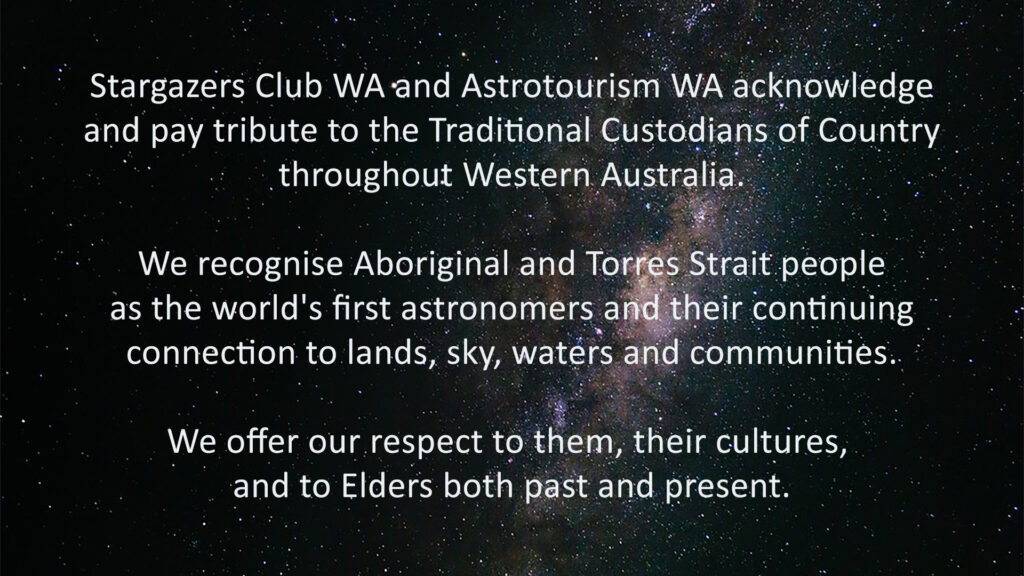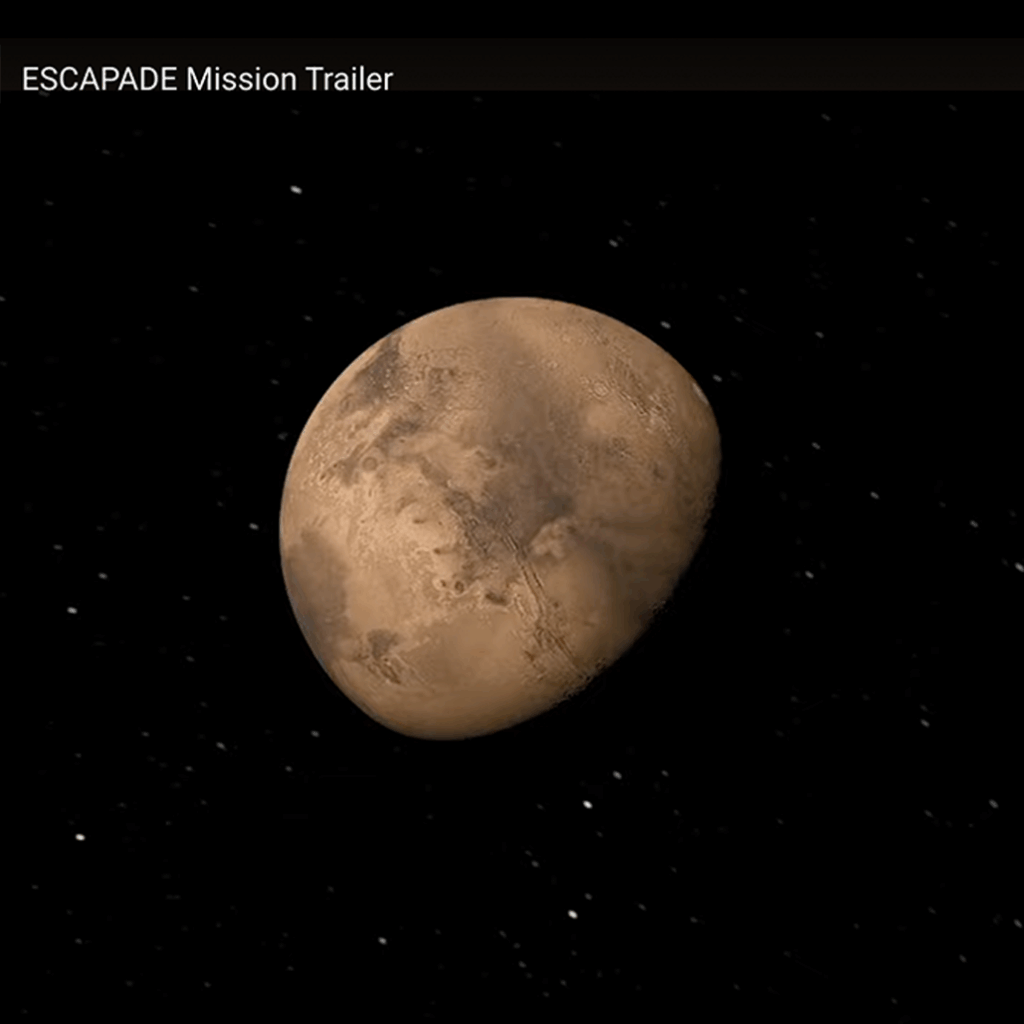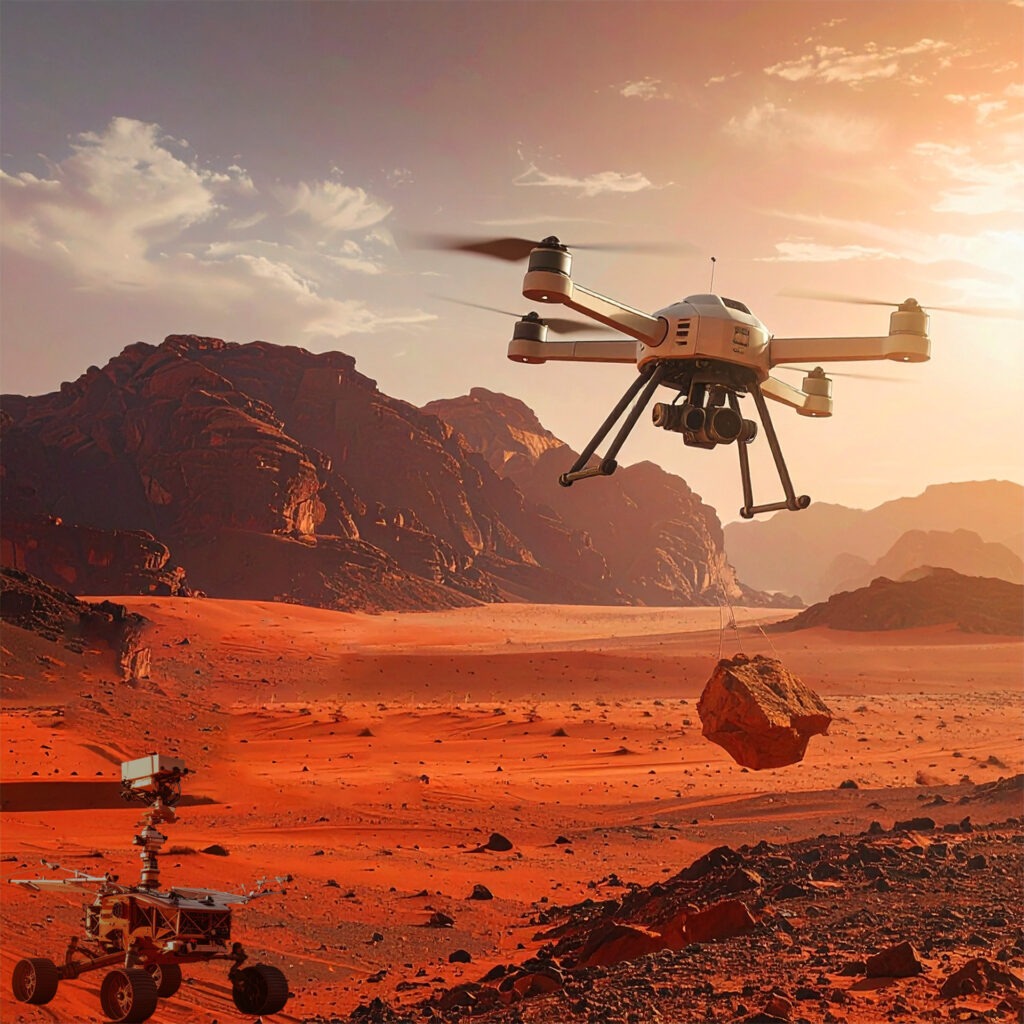Mars has captured humanity’s imagination perhaps more than any other planet, probably since Italian astronomer Giovanni Schiaparelli’s description of “canali” on the red planet, which was subsequently mistranslated (and misunderstood) as artificially constructed canals.
Our neighbour planet is a difficult place to explore, and it’s long been frustrating the craft we’ve sent its way. Approximately half of the 50 or so spacecraft we’ve sent to Mars have failed. Between 1960 and 1971, there were at least a dozen failed missions. It was only 1971 that a Mars lander transmitted anything from the surface — and that lasted 14.5 seconds before it lost contact.
In 1997, a journalist jokingly suggested a Great Galactic Ghoul to explain the struggles. This ‘ghoul’ waited on Mars to devour unsuspecting spacecraft. We’ve come a long way with our Mars missions in the decades since then, including NASA’s first Mars rover, Sojourner, in 1996.
Here are a few upcoming Mars missions we’re excited about.
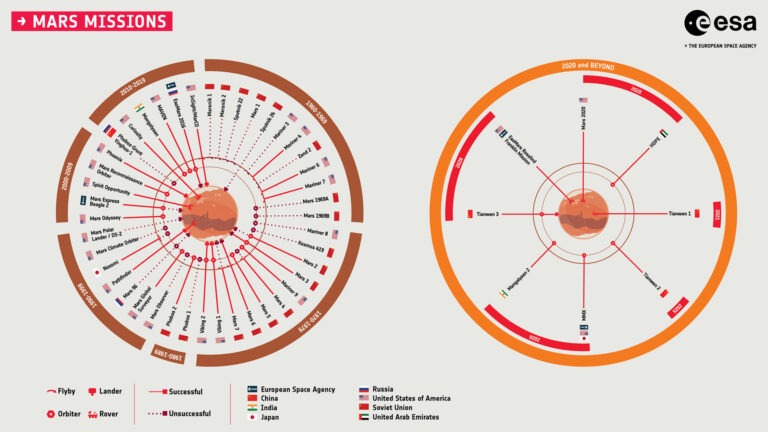
Later this year, the ESCAPADE mission blasts off to the red planet. Led by the UC Berkeley Space Sciences Laboratory, ESCAPADE’s twin spacecraft will study the Martian atmosphere and its interaction with the solar wind.
ESCAPADE’s twin-satellite mission will work with existing Mars orbiters to unravel how the Sun’s relentless flow of particles has stripped away Mars’ atmosphere.
The mission is an essential part of the agency’s Small Innovative Missions for Planetary Exploration (SIMPLEx) program. SIMPLEx aims to demonstrate that it’s possible to build and launch small satellites comparatively quickly and inexpensively.
With projects like the joint ESA-NASA Mars Sample Return mission currently under threat of cancellation, more affordable and more rapidly developed spacecraft could be the future of space exploration.
Find out more about the Escape and Plasma Acceleration and Dynamics Explorers here: https://science.nasa.gov/mission/escapade/
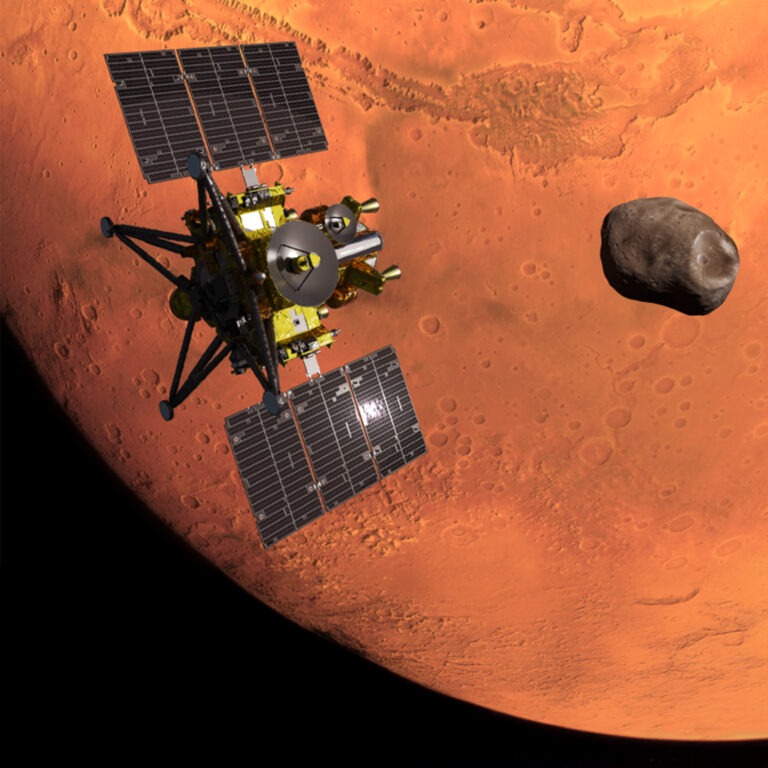
Japan’s MMX (Martian Moons eXploration) mission is heading to Phobos in late 2026. Better yet, JAXA plans to return a sample of the small Martian moon to Earth.
Mars’ twin moons, Phobos and Deimos, are curious. They’re remarkably small and orbit closer to the planet than any other moons in our solar system. Astronomers have long debated whether the pair are asteroids captured in the red planet’s orbit, or if they formed after something colossal collided with Mars.
After reaching Mars about a year after its launch, MMX will first study Phobos from orbit, before deploying a rover to investigate and take samples of the moon’s surface. Read more about the Martian Moons exploration mission here: https://www.mmx.jaxa.jp/en/
Fun fact: the names Phobos and Deimos mean fear and dread. In Greek mythology, the two are the sons of Ares, the god of war.
The European Space Agency is sending Rosalind Franklin to Mars in 2028.
Named after the forgotten heroine of DNA, the ExoMars Rosalind Franklin rover aims to answer “whether life existed or is still present on Mars”.
ExoMars’ Trace Gas Orbiter studies Mars’ atmosphere from orbit, hunting for signs of methane and other gases that might suggest life. The Rosalind Franklin Rover is going where no rover has gone before: drilling two metres below the Martian surface.
Scientists think Mars once supported liquid water on the surface, when its atmosphere was much thicker than it is now. These deep samples could hold secrets Mars has been guarding from its extreme surface radiation and temperatures.
Read more about the ExoMars programme and Europe’s first Mars rover here: https://www.esa.int/Science_Exploration/Human_and_Robotic_Exploration/Exploration/ExoMars.
Earth-based studies also allow scientists to use new analytical technologies as they emerge. This means that returned samples can be re-tested years or decades later as we develop more advanced tools. Most importantly, we need to independently verify and reproduce experiments on returned samples — especially if scientists believe they’ve found evidence of life.

Jay Chesters
Jay Chesters is a wordsmith with a little bit of a thing for the stars. As a cosmic storyteller with a love for astronomy and space that's out of this world, Jay’s always eager to share his knowledge and passions.
explore the cosmos from astrotourism towns
